

How to Extract Gold from Electronics Without Chemicals?

Raspberry Pi Serial (UART) Tutorial

CR2025 vs. CR2032 Batteries: What is the Difference?
No power but circuit breaker not tripped: how to fix.

Are you dealing with a power outage in your home and can’t seem to find the cause? You’ve checked the breaker box and all the breakers are still on, but there’s still no power. Don’t worry – this might sound daunting, but it doesn’t have to be complicated or scary.
In this article, we’ll cover why circuit breakers fail even when they don’t appear to be tripped and what you can do to remedy the situation.
From repair tips to safety reminders, this will help ensure that you stay safe while restoring your electricity quickly!
Getting Your Power Back by Calling an Electrician
If the power is not working, call an electrician. They have special tools and knowledge to help figure out why the power isn’t working.
They can also fix it quickly and safely. An electrician will make sure all the electrical systems are working before turning on the power again. [1]
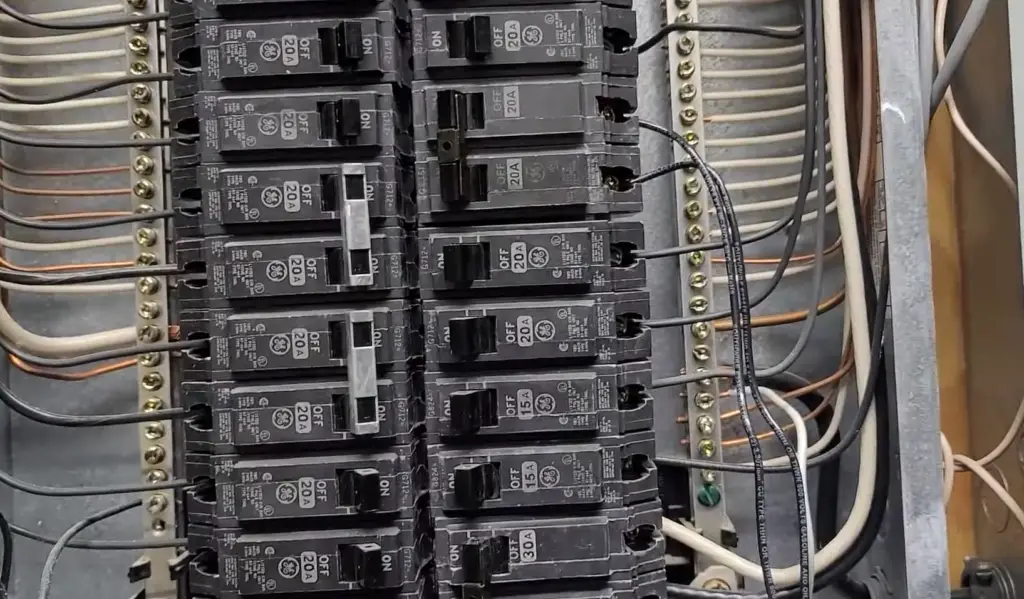
Why Would Power Not Work in One Room?
There are a few possible reasons why power might not be working in one room.
- A loose or disconnected wire can prevent the power from getting to that socket or appliance.
- The circuit breaker for that room may have been tripped, but due to a problem in the wiring it hasn’t reset itself automatically.
- The circuit breaker may have been replaced with one of a different type and it is not compatible with the wiring in your home.
- The fuse box could be old or faulty, so that it can’t trip properly when the power overloads. [2]
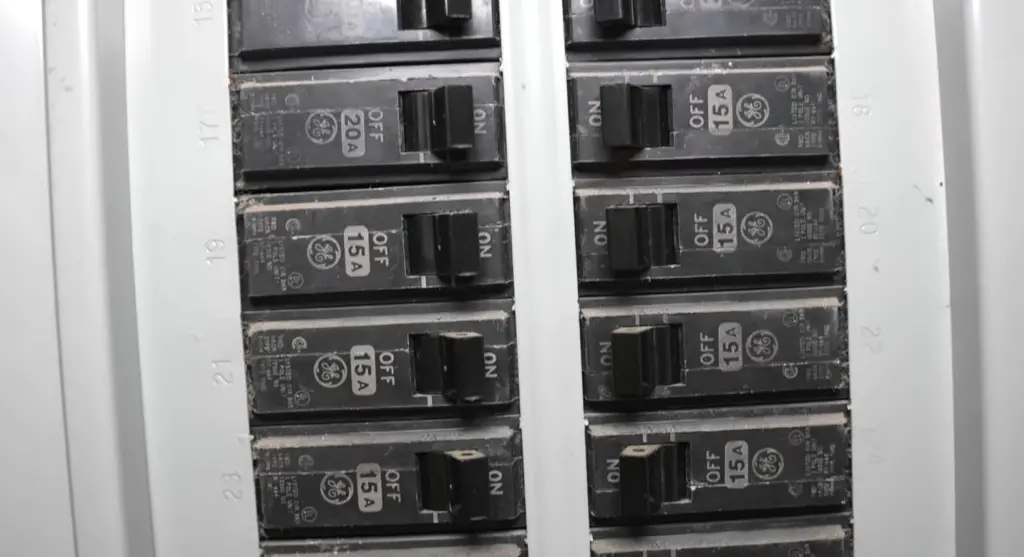
Why Has My Electricity Gone Off, but Nothing Has Tripped?
There could be a few reasons why your electricity has gone off.
- A loose wire or connection, either in the circuit breaker box or at the metre, can cause a short circuit and trip the power.
- An old fuse box might not be able to handle newer electrical loads, resulting in an overload.
- A faulty circuit breaker could be malfunctioning and not tripping properly.
- The wiring in your house might be damaged, either due to age or weather conditions such as lightning strikes.

6 Steps to Diagnose and Fix The Problem Quickly
Identify where you’ve lost power.
Identify exactly where the power has gone off. Is it a specific room or appliance? Knowing this can help narrow down the possible causes.
Try Resetting the Breaker
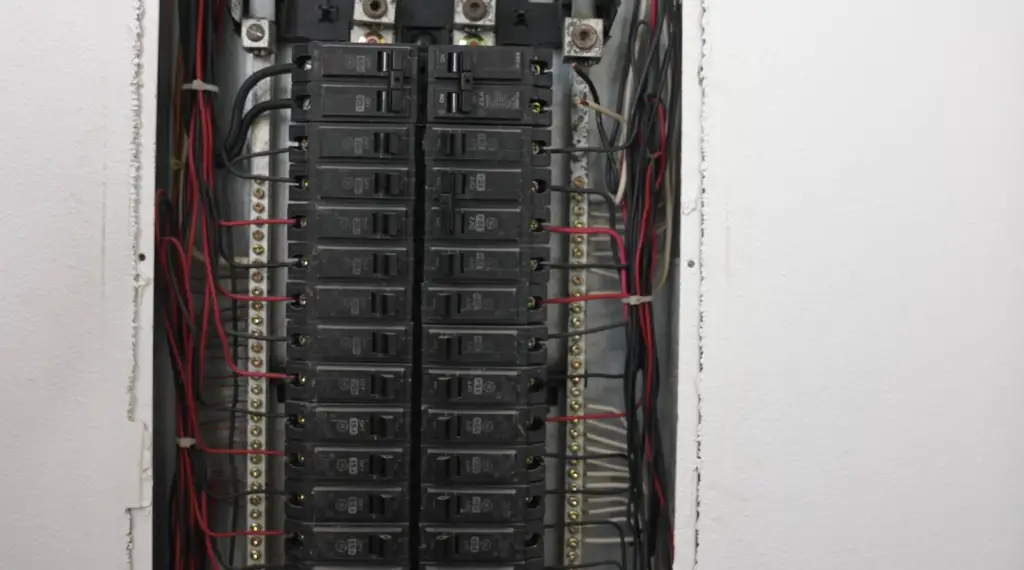
Check any GFCI Outlets
Check the GFCI outlets. These are special outlets with two buttons, labelled “reset” and “test”. Push the reset button to see if it will turn on power in that room.
Check Connections
Check all the wires, connections and outlets in the room. Make sure they’re all secure and connected properly. If any are loose, tighten them up or replace them if necessary.
Check the Switch
Check the switch to make sure it is working properly. If it isn’t, replace it with a new one.
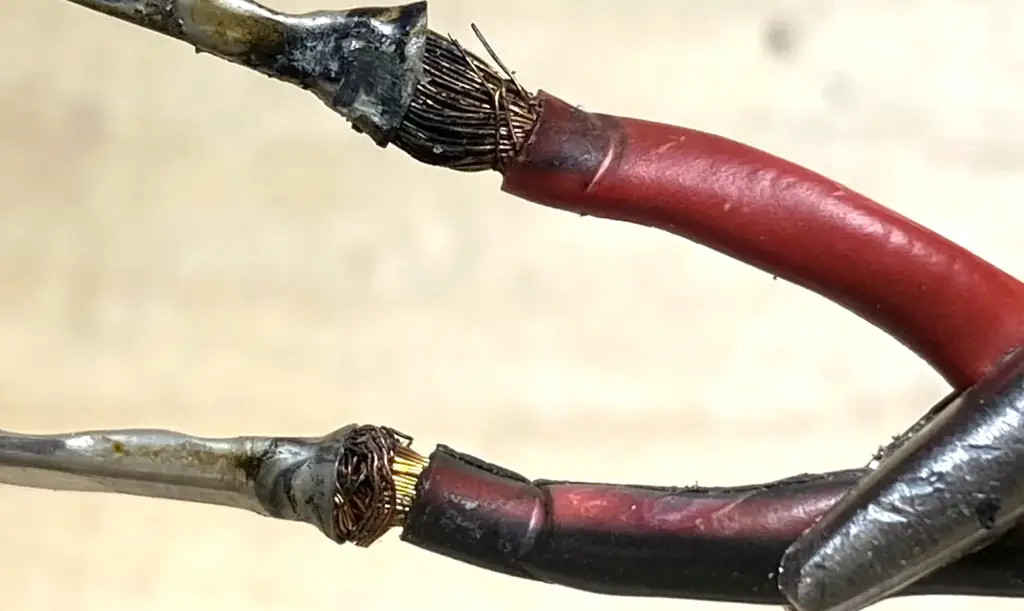
Why is my circuit breaker not tripping, but no power?
This could be due to a loose wire or connection, either in the circuit breaker box or at the metre.
It might also be caused by an old fuse box that can’t handle newer electrical loads, or a faulty circuit breaker that isn’t tripping properly.
Can I fix a power outage on my own?
It is not recommended to attempt to fix a power outage on your own. If you suspect the problem lies in the wiring, it is best to call an electrician who will be able to diagnose and fix the issue.
What should I do if my circuit breaker won’t trip?
If you suspect that your circuit breaker isn’t tripping properly, contact an electrician right away. They will be able to diagnose the problem and suggest a solution that is safe and effective.
Why is my circuit breaker not restoring power?
If your circuit breaker is not restoring power, it could be due to a loose wire or connection, an old fuse box that can’t handle newer electrical loads, or a faulty circuit breaker. Contact an electrician if you suspect any of these problems.
Can a circuit breaker be on but with no power?
Yes, a circuit breaker can be on but with no power. This could be due to a loose wire or connection, an old fuse box that can’t handle newer electrical loads, or a faulty circuit breaker. Contact an electrician if you suspect any of these problems.
How do you fix a circuit breaker that won’t reset?
If the circuit breaker won’t reset, it may be due to an overload or a faulty connection.
First, make sure that all wires and outlets are secure and connected properly. If this doesn’t fix the problem, contact an electrician to diagnose and repair the issue.
How to Prevent It From Happening Again?
To prevent similar issues from occurring in the future, make sure that all wires and connections are secure.
Regular maintenance of the circuit breaker box should also be conducted, as this can help detect any potential problems before they become an issue.
Additionally, it’s important to ensure that your electrical wiring can handle increased electrical loads by investing in larger circuit breakers and wiring.
Why Hire a Professional?
Hiring a professional electrician is important when addressing any electrical issue. They will be able to properly diagnose the problem and make sure that it is fixed correctly and safely.
Additionally, they can help you identify any potential problems in your wiring or circuit breaker box that might lead to future issues.
Working with an experienced professional is always the safest and most reliable way to fix any electrical issue.
Does My Homeowner’s Insurance Cover Electrical Issues?
It depends on your homeowner’s insurance policy. Some policies may cover the cost of repairs for certain electrical issues, while others may not.
It’s important to check with your insurer and ask about coverage for electrical problems.
Do I Need to Update My Wiring for New Electrical Loads?
Yes, it’s important to make sure that your wiring can handle the increased electrical loads. You may need to invest in larger circuit breakers and wiring to ensure that your home is able to safely handle new electrical loads.
Working with a professional electrician can help you determine what upgrades need to be made and how to make them safely
Does This Issue Require Professional Help?
Yes, it is recommended to seek the help of a professional electrician if you are experiencing any issues with your electricity. They will be better equipped to diagnose and fix the problem in a safe and effective way.
Do I Need to Have the Power Turned Off Before Working On My Electrical System?
Yes, it’s important to always turn off the power before working on any electrical system.
It is also recommended that you wear protective equipment when doing any work on your electrical system to ensure your safety.
Does My Home Have the Right Circuit Breaker Box?
It is important to make sure that your home has a circuit breaker box that is appropriate for the electrical load. An electrician can help you determine if your current box is suitable or if an upgrade is necessary.
It’s also important to regularly inspect and maintain your circuit breaker box in order to detect any potential problems.
Why Is My Breaker Tripping?
Your breaker may be tripping due to an overload, a faulty connection, or a faulty circuit breaker. This is why it’s important to have an electrician inspect your wiring and connections and replace any old or worn out components.
What Should I Do If I Can’t Reset the Circuit Breaker?
If you can’t reset the circuit breaker, make sure that all wires and outlets are properly connected. If this doesn’t fix the problem, it’s time to call a professional electrician to diagnose and repair the issue.
Which Electrician Should I Hire?
When hiring an electrician, it’s important to do your research and find someone that is licensed and insured. Ask questions about their experience, qualifications, and reviews from past customers.
Working with a professional who can provide quality work will ensure that the job is done right the first time.
Which Electrical Devices Should Not Be Connected to the Same Circuit?
It’s best to separate these items onto different circuits in order to prevent any problems from occurring.
Can I Fix This Issue Myself?
No, it is not recommended to attempt to fix this kind of electrical issue yourself. An electrician will be better equipped and have the experience necessary to diagnose and fix the problem correctly.
They can also help identify any potential hazards or problems that could arise from future electrical work.
Can I Test My Electrical System to Make Sure It’s Working Properly?
Yes, you can test your electrical system by using a voltage tester. This device can help you detect any irregularities in the voltage or current and identify if there is an issue with your wiring.
Can I Install a New Outlet or Switch Myself?
No, it is not recommended to install a new outlet or switch yourself. This kind of work should be done by a professional electrician in order to ensure that it is done correctly and safely.
An electrician can also make sure that the wiring complies with local electrical codes, which will help to avoid any potential problems down the line.
Is It Okay to Use Extension Cords for Long-Term Power?
No, extension cords should not be used for long-term power. This type of cord is only designed for temporary usage and can lead to overheating or fire hazards if it is used long-term.
Are There Any Other Electrical Issues I Should Be Aware Of?
Yes, it is important to be aware of any potential electrical issues that could arise. This includes making sure all wiring and connections are secure and up to date.
It’s also a good idea to inspect your circuit breaker box regularly for any signs of wear or damage.
Additionally, you should never attempt to work on any electrical system without shutting off the power first.
Are There Any Maintenance Tips to Keep My Electrical System in Good Working Condition?
Yes, there are some simple maintenance tips that can help ensure your electrical system is always in good working order.
- First, make sure all wires and connections are secure and up-to-date.
- Second, inspect the circuit breaker box regularly for any signs of wear or damage.
- Lastly, always shut off the power before attempting any work on the electrical system.
Should I Contact a Professional if I Have Any Questions or Concerns?
Yes, it’s always best to contact a professional electrician if you have any questions or concerns. A professional can provide insight and information that can help keep your electrical system safe and running smoothly.
They can also perform inspections and repairs as needed in order to maintain the longevity of the system.
Should I Replace My Electrical Components Frequently?
No, it is not necessary to replace electrical components frequently. However, it’s important to regularly inspect the system and have a professional electrician check for any potential hazards or issues. This can help ensure your electrical system is running safely and efficiently.
What Should I Do If My Electrical System Is Not Working Properly?
If your electrical system is not working properly, it’s important to have a professional electrician inspect the system and make any necessary repairs.
This can help identify any potential issues that could lead to safety hazards or damage down the line.
Additionally, having an electrician perform regular inspections and maintenance can help ensure your electrical system remains in good working order.
How Can I Prevent Electrical System Issues in the Future?
In order to prevent electrical system issues in the future, it’s important to regularly inspect and maintain the system.
This includes checking wiring and connections for any signs of wear or damage, as well as having a professional electrician perform regular inspections and maintenance.
Additionally, you should always shut off the power before attempting any repairs or adjustments. Following these simple steps can help ensure that your electrical system remains safe and in good working condition for many years to come.
What Are Some Common Causes of Electrical System Issues?
Some common causes of electrical system issues include loose or corroded wiring and connections, overloaded circuits, and faulty circuit breakers.
It’s important to be aware of these potential issues in order to take steps to prevent them from occurring in the future.
Useful Video: No power in some electrical outlets in the house but circuit breaker not tripped. PROBLEM SOLVED!
In summary, when the power goes out but the circuit breaker has not tripped and you are at a loss for what to do, following these simple steps can help you to successfully address the problem. If none of these steps work, it is always advisable to call an experienced electrician.
While fixing an electrical problem without having had any prior experience can sometimes seem daunting, following basic safety protocols and taking your time with each step of the process should help ensure a safe and successful outcome.
In this manner, with a few precautionary measures and careful workmanship, anyone can successfully restore power in their home or workplace. Take charge of your situation today and get back on track!
- https://www.circuitbreakerwholesale.com/blogs/circuit-breakers/what-to-do-when-your-circuit-breaker-is-on-but-there-is-no-power
- https://www.ecoenergygeek.com/power-out-breaker-not-tripped/

What Does the Battery Fuse Do?
How to protect outdoor extension cord from rain.

What Does a Fiber Optic Cable Look Like?
How to fix an open neutral outlet.
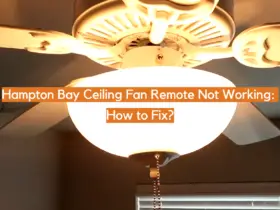
Hampton Bay Ceiling Fan Remote Not Working: How to Fix?

Hunter Fan Remote Not Working: How to Fix?
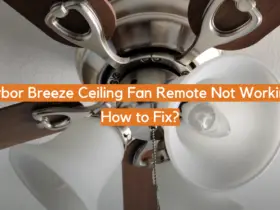
Harbor Breeze Ceiling Fan Remote Not Working: How to Fix?
- Account Settings
Home Services
- Home Security
- Pest Control
- Living Room
- Other Rooms
Home Improvement
- Cost Guides
- Floor Plans
- Housekeeping
- Cleaning Tips
- Organization
- Popular Brands
- Sizes & Dimensions
Smart Living
- Dangerous Areas
- Safest Areas
- Most Affordable Areas
Top stories

Can A Circuit Breaker Fail Without Tripping? (Find Out Now!)

A circuit breaker is the first line of defense between you, your home, and serious electrical problems. Homeowners can rest easy knowing that their breaker will trip when there is a short circuit, ground fault, or electrical failure. That is unless your circuit breaker fails without tripping.
A circuit breaker can fail without tripping if there is low voltage or if you overload the circuit. Outdated breakers may not trip when they fail due to deterioration or frayed wires. Circuit breakers can overheat due to excessive loads or if they are uneven and it can cause a breaker to fail without tripping.
Inspect your circuit breaker for visual damage if your circuit breaker fails without tripping. This is a serious problem because circuit breakers trip as a safety measure, and it’s a necessary function. Follow along as we explore why a circuit breaker can fail without tripping and see what you should do about it.
Do You Need Electricial Wiring or Panel Upgrade Services?
Get free, zero-commitment quotes from pro contractors near you.

Can Circuit Breaker Fail Without Tripping?
A circuit breaker can fail without tripping if it is damaged and you will need to replace it . Drops in voltage or a poor connection can cause a circuit breaker to fail and it may not even trip. Make sure that your electric panel has enough voltage to support your circuit breaker whether it’s a single, double, or triple-pole unit .
Voltage requirements for circuit breakers vary based on the type that you have, and single-pole breakers have a 120-volt minimum . Your circuit breaker can fail and it won’t trip if the voltage drops below your circuit breaker’s minimum requirement. This can create a fire hazard and you may not realize it until it’s too late.
There are several reasons for a circuit breaker to fail without tripping, but overheating and low voltage are the main causes. However, age, deterioration, and even the location of the circuit breaker all play a factor in its failure. You need to call an electrician right away if your circuit breaker fails without tripping because it is unsafe to have a breaker that doesn’t work properly.
Possible Causes
There isn’t always an obvious cause when your circuit breaker fails without tripping, and that can be frustrating. However, it helps if you know how old your breaker is and keep track of how it looks when it works as intended. Let’s take a look a the most common reasons that a circuit breaker can fail without tripping.
1. Low Voltage
Circuit breakers require a specific minimum voltage or else they cannot work and trip properly. The voltage requirement varies based on what kind of circuit breaker you have. For example, your electric panel requires 240 volts if you have a double-pole or triple-pole circuit breaker .
A breaker won’t work as intended if the electrical panel cannot reach the minimum voltage requirement. An underpowered circuit breaker can easily fail and it likely won’t trip which is a major safety risk. Uneven electrical currents can create a fire hazard, and that only gets worse if your breaker doesn’t trip.
Damaged or outdated circuit breakers often have low voltage because their resistance increases. The more resistance your circuit breaker and panel faces, the more likely it is that the voltage will drop. Make sure that your circuit breaker is at 120 volts for a single-pole unit or 240 volts for a double or triple-pole unit.
2. Overload
A circuit can overload and cause your breaker to fail, and in many cases, it won’t even trip. Overloaded circuits are dangerous, and that’s especially true if the breaker doesn’t trip. You can easily overload your circuit if you plug in too many appliances at once .
Your breaker will generally trip if you overload it with too many appliances. A healthy breaker can trip when there is an overload, but that isn’t the case for old and outdated breakers. You can also weaken a circuit breaker over time if you repeatedly overload it .
New and healthy breakers react as quickly as possible when they detect a short circuit, ground fault, or overload. Not all overloads damage a breaker, but even one overload can cause your breaker to stop working properly. Get help right away if you smell smoke or notice scorch marks if your breaker fails without tripping due to an overload.
3. Outdated
The average circuit breaker lasts 35 years, but that doesn’t mean that they work well that whole time. A circuit breaker can easily wear out and go bad before then due to moisture conditions, the climate, and its location . You can generally tell that a circuit breaker is outdated if you inspect it and detect damage or deterioration.
Cosmetic deterioration is normal for old circuit breakers, but it only becomes a problem when it affects performance. Surface level damage doesn’t always affect performance but you should inspect the breaker box for serious cracks. Cracks are dangerous because they can expose important wires that can become damaged.
Pay attention to your breaker if it is between 20 and 30 years old because it is more likely to deteriorate and work poorly. A breaker’s peak performance is at 10-20 years, but you can make it last up to 40 years if you take care of it and monitor it closely. Call a professional right away if there are clear cracks in your breaker and it fails without tripping.
4. Overheating
A circuit breaker may not trip when it fails if it overheats, and it can seriously damage the unit. Breakers overheat either due to an overload or because of the outside temperature , and both cases are dangerous. However, the most likely reason for a breaker to overheat is that there is a loose connection somewhere within the system.
You may have to adjust your breaker or seat it again to ensure that the connection is tight. Inspect the breaker box to see if it sits evenly or if one end sticks out more . An uneven breaker can indicate that something is loose and that the box isn’t in the ideal position.
However, overheating can often tell you that your breaker is about to overload. That means that you put a load on the circuit that is nearly too much, but not quite enough to overload entirely. Your breaker may overheat in this case and it can fail if you let it go on for too long.
5. Wiring Connection
The wiring in your circuit breaker is everything when it comes to a good performance. Loose wires, frayed wires, or poor installation can cause your circuit breaker to malfunction in several ways. Many homeowners don’t know that something is wrong with the breaker until it fails.
Faulty wiring can disrupt the connection and prevent your circuit breaker from tripping when it normally would. This creates a major safety hazard, especially if you have an overload, short circuit, or ground fault . Short circuits should generally trip your circuit breaker, but that doesn’t always happen and your breaker will still fail.
That is the worst-case scenario, and you should immediately hire an electrician to fix the problem. Many DIYers install circuit breakers without professional help, but that can often lead to wiring problems. You risk arching which ultimately damages the circuit breaker and can potentially cause a fire.
6. Breaker Switch Stuck
Breaker switches are simple components of a circuit breaker, but even they can fail. Your breaker won’t trip if the switch is stuck in many cases, and that is an easy fix. It costs an average of $130 to replace a breaker switch that is stuck if you hire a professional.
You can replace your own breaker switch if you shut off the power to the box and carefully remove the switch and its socket. However, a switch that is stuck can often point to larger problems such as an outdated or damaged breaker box. Inspect the box to make sure that the switch is the only problem, and always replace stuck switches right away.
It is unsafe to live in a house if the switch is broken because the breaker won’t trip. You will fail an inspection if something is wrong with your circuit breaker, and that includes a stuck switch.
Do Circuit Breakers Wear Out?
A circuit breaker can wear out if it is between 20 and 40 years old or if it trips regularly. Frequent trips can take a toll on a circuit breaker, especially you continually overload the breaker. Wires can wear out and fray over time, and that is one of the first signs that you need to replace your circuit breaker .
Call a professional immediately if you notice a burning smell near your circuit breaker box. You can’t always blame the circuit breaker when it trips, so it’s important to determine the cause. In most cases, your circuit breaker trips because of an excessive electrical load and not because of the breaker itself.
However, it is important to inspect the circuit breaker and get a professional opinion if it continually trips. A breaker’s resistance can fluctuate over its lifespan and that can cause it to wear out or go bad eventually . Modern breakers can last up to 40 years, but old or poorly installed breakers may go bad in as little as 10 years.
Signs Circuit Breaker is Bad
You can nip the problem at the bud if you know the telltale signs of a bad circuit breaker. It is important to note that you should evacuate the house and call for help if there is an overwhelming burning smell that continues to grow. Some of the main signs that a circuit breaker is bad include:
- A distinct burning smell comes from the circuit breaker. Even a mild burning smell is a sign that something is wrong with your circuit breaker. However, a severe burning smell means that you’ll likely have to repair or replace the breaker altogether.
- Scorch marks and burns on the breaker panel. Visible damage often accompanies a burning smell, but you can find scorch marks even if you don’t smell burning. This typically suggests that it burned at one point and you didn’t notice it at the time.
- Your breaker trips for no apparent reason. This happens with old or damaged circuit breakers even if there is no overload, short circuit, or ground fault.
- The breaker won’t stay reset. You can tell that something is wrong if your breaker trips again after you reset it. This can happen multiple times until you fix or replace the circuit breaker.
It is important to pay attention to your circuit breaker’s appearance and performance. This can help you minimize the risk of electrical problems, breaker damage, and even fires. Ideally, a circuit breaker will last for an average of 35 years, but that doesn’t always happen. Watch out for these signs of a bad breaker so that it doesn’t fail without tripping.
Summing It Up
Circuit breakers can fail without tripping if they are between 20 and 40 years old or damaged. Worn-out circuit breakers are less reactive and have too low or too high of resistance in some cases. Try not to overload your circuit with electrical appliances or the breaker may fail without tripping.
Inspect your breaker switch to make sure that it isn’t stuck, and replace the switch if it is. Replace the entire circuit breaker if you notice scorch marks or a burning smell near the box.
Related Guides
- Circuit Breaker Tripping With Nothing Plugged In?
- Lights Flicker Off And On But Circuit Breaker Doesn’t Trip?
- How To Increase Circuit Breaker Amps

We are a team of passionate homeowners, home improvement pros, and DIY enthusiasts who enjoy sharing home improvement, housekeeping, decorating, and more with other homeowners! Whether you're looking for a step-by-step guide on fixing an appliance or the cost of installing a fence, we've here to help.
More by Upgraded Home Team

What To Do When Your Movers Work Slowly
Popular articles.

Does Toothpaste Go Bad? (And How You Can Tell)

How Long Does It Take To Grow Your Own Christmas Tree?

Why Is My AC Evaporator Freezing Up?

When Should You Decorate For Halloween?

Should You Repair Or Replace Your Air Conditioner?
You may also be interested in.
![circuit breaker didn't trip The 10 Best Table Saws - [2022 Reviews & Buyer's Guide]](https://cdn-fastly.upgradedhome.com/media/2023/07/31/9070645/the-10-best-table-saws-2022-reviews-buyer-s-guide.jpg?size=350x220)
The 10 Best Table Saws - [2022 Reviews & Buyer's Guide]

ReliaBilt Door Review: Possibly The Best Patio Sliding Doors?

Easily Install Crown Molding (On Cabinets That Go To The Ceiling)
![circuit breaker didn't trip Finishing Basement Without Permit [Is It Really Illegal?]](https://cdn-fastly.upgradedhome.com/media/2023/07/31/9070078/finishing-basement-without-permit-is-it-really-illegal.jpg?size=350x220)
Finishing Basement Without Permit [Is It Really Illegal?]


15 Beautiful Examples of Wood Stairs With White Risers

Water Heater Keeps Tripping Breaker? (Possible Causes & Fixes)

The Most Dangerous Neighborhoods In Seattle: 2022's Ultimate List

Standard Bunk Bed Dimensions & Guidelines (with Photos)

Amana Vs. Whirlpool Appliances: What Are The Major Differences?

How To Report A House That Should Be Condemned (It's Super Easy!)

How To Reset Your White Rodgers Thermostat (All Models)
![circuit breaker didn't trip Cost To Drill A Well [Pricing Per Foot & Cost By State]](https://cdn-fastly.upgradedhome.com/media/2023/07/31/9074980/cost-to-drill-a-well-pricing-per-foot-cost-by-state.jpg?size=350x220)
Cost To Drill A Well [Pricing Per Foot & Cost By State]

What Are The Pros And Cons Of A Black Gum Tree?

TV Keeps Going Black For A Few Seconds? (Possible Causes & Fixes)

How Much Roundup To Add Per Gallon of Water? (Find Out Now!)

Standard Chair Dimensions (All Types & With Drawings)

The 15 Most Dangerous Neighborhoods In DC: 2022's Ultimate List

20 Different Types of Holly Bushes (with Photos)

Safety • Dependability • Service
Electrical services in northern jersey.
and the surrounding area!
Call Now For a FREE ESTIMATE!
973-857-4333
Get in Touch With us Today!
CALL NOW 973-857-4333

In a recent post, we addressed problems with tripping circuit breakers and what to do if your electrical panel has continually tripping breakers . Today’s post goes to an opposite problem—circuit breakers that don’t trip.
“Wait, how is that a problem?” you ask. It’s a problem if you have a sudden loss of power in the house—such as the lights going out—and the circuit breaker for those appliances and outlets hasn’t tripped. The most common solution for losing the lights is a tripped breaker, and in most cases resetting the breaker is all you need to do. (And if they keep tripping, see the post linked above.)
We’re going to look at what might cause your lights to go out (or start to flicker) that isn’t a tripped circuit breaker or a single burnt-out light bulb.
A different type of breaker tripped
The circuit breakers in your electrical panel are not the only breakers in your house. There may be local ones that can affect your lights. Two in particular:
- GFCI Outlet: These are safety outlets designed to prevent people from receiving high voltage shocks either from the outlet itself or through an appliance plugged into it. We strongly recommend having these outlets installed in your home if you don’t have them. If the lights that went out are plugged into a GFCI outlet, press the “test” button. If the button doesn’t click down, then it means the GFCI has tripped its internal circuit breaker. Press the other button on the outlet, “reset,” until it clicks. See if this restores the lights.
- Power Strip: If the lights are plugged into a power strip connected to an outlet, the power strip may have tripped its breaker. Reset the breaker (a button that pops out) and then check on the lights again.
This covers a wide amount of ground, and can include loose wiring connections or frayed wiring. It’s more common for older electrical systems. The wiring in the outlets can have fallen from loose screws—this is a common problem, and we recommend you allow an electrician to handle the repairs so you won’t have electric shock dangers. Frayed wiring and other loose wires elsewhere will also need the repair assistance of a professional electrician since they are a frequent cause of house fires. Please shut off the circuit breaker for these lights and call for assistance.
House voltage needs to be upgraded
Failed lights or flickering lights can be a warning that your home needs to have its voltage upgraded to current standards. This is a job our electricians can handle—they’ll assess your home’s current system and find the best way to upgrade it.
For the electrical repair in Montclair, NJ and throughout Northern Jersey that will fix any lighting, wiring, or electrical panel issues, you can trust our electricians. Remember that attempting DIY work on your electrical system can be extremely dangerous. Don’t take chances. Go to the trusted professionals.
Anderson Electric Corp. has been your local electrician for over 25 years. Call us for any electrical repairs you need.
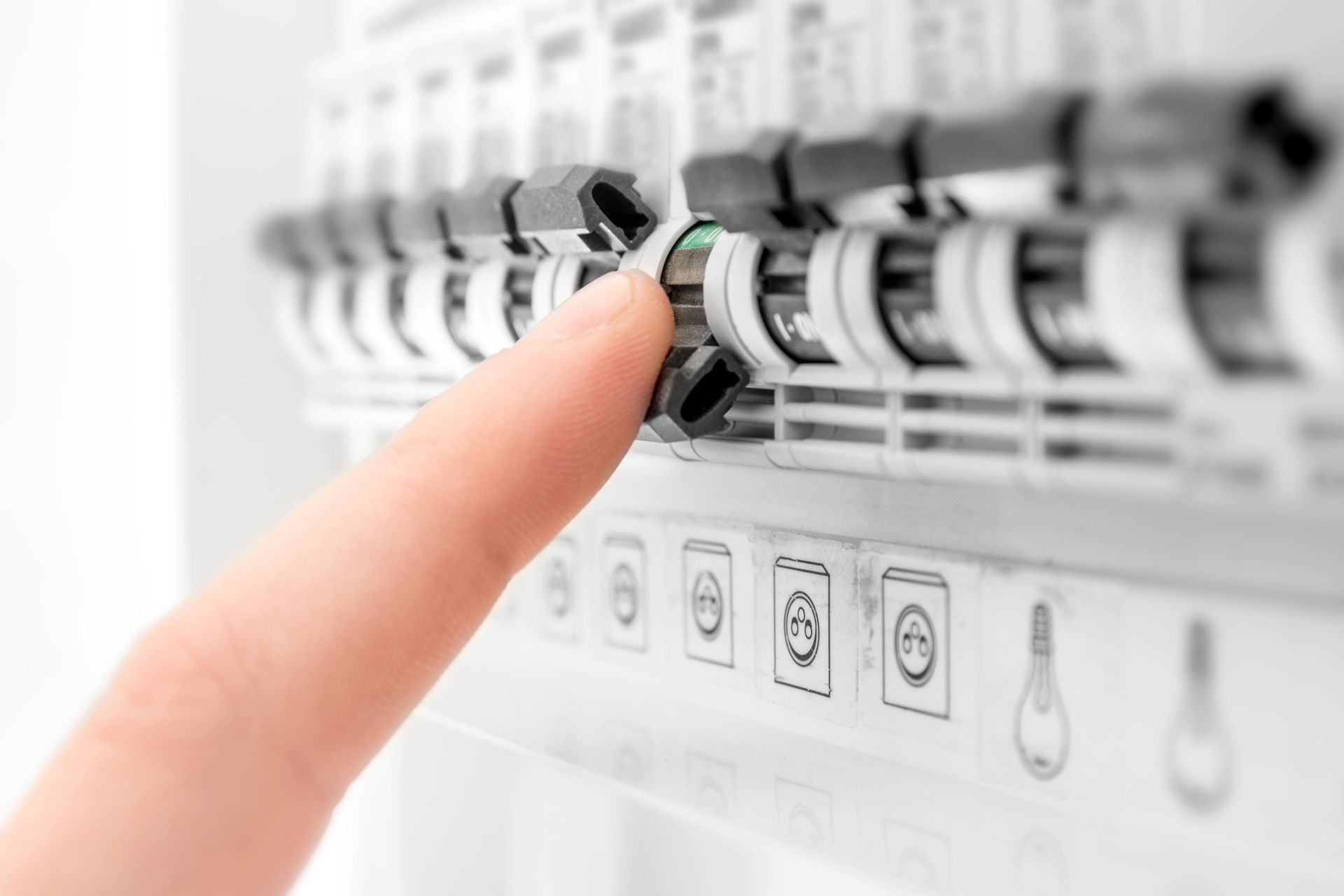
Here’s Why Your Circuit Breaker Keeps Tripping!
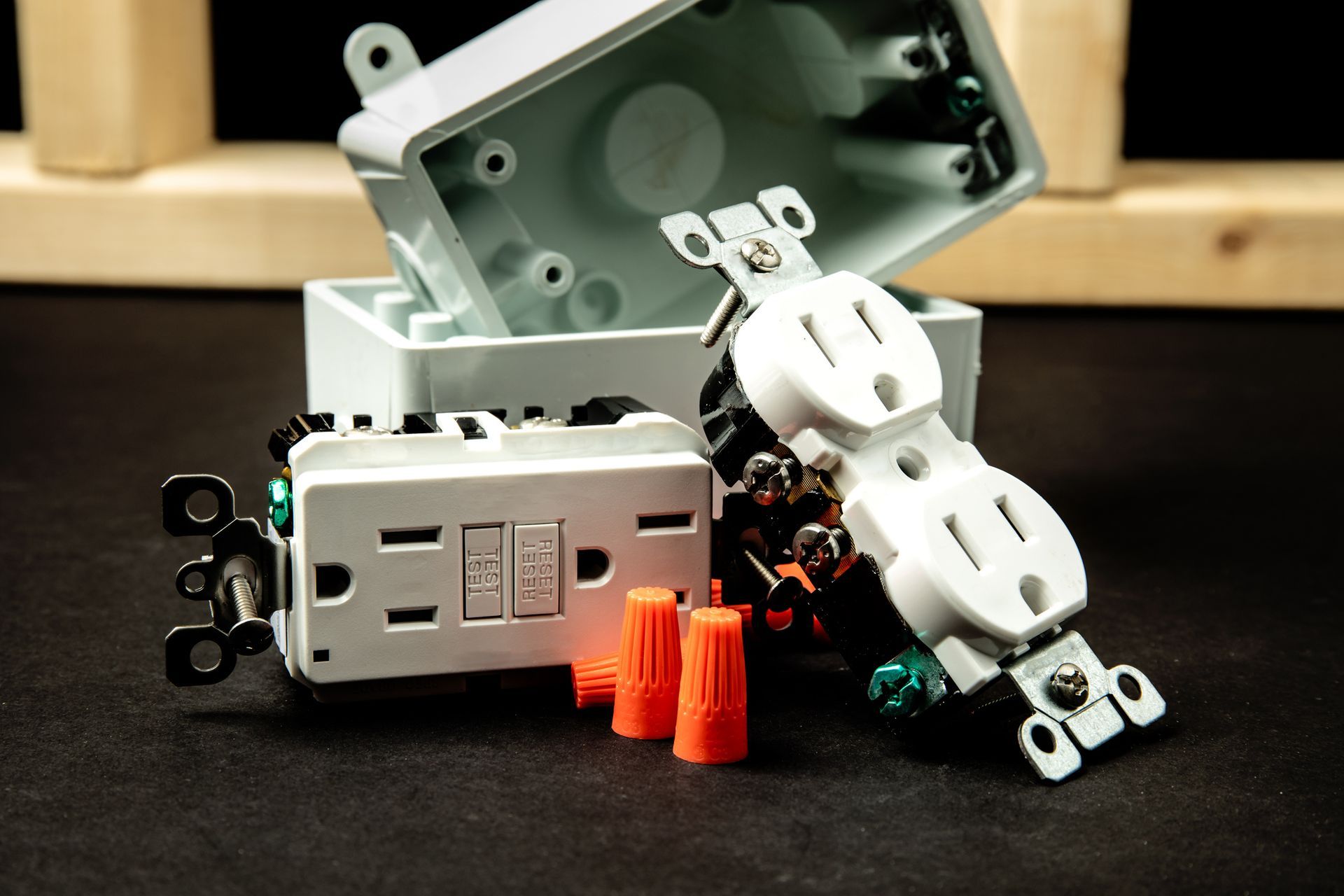
What’s the Deal With GFCI and AFCI Outlets?
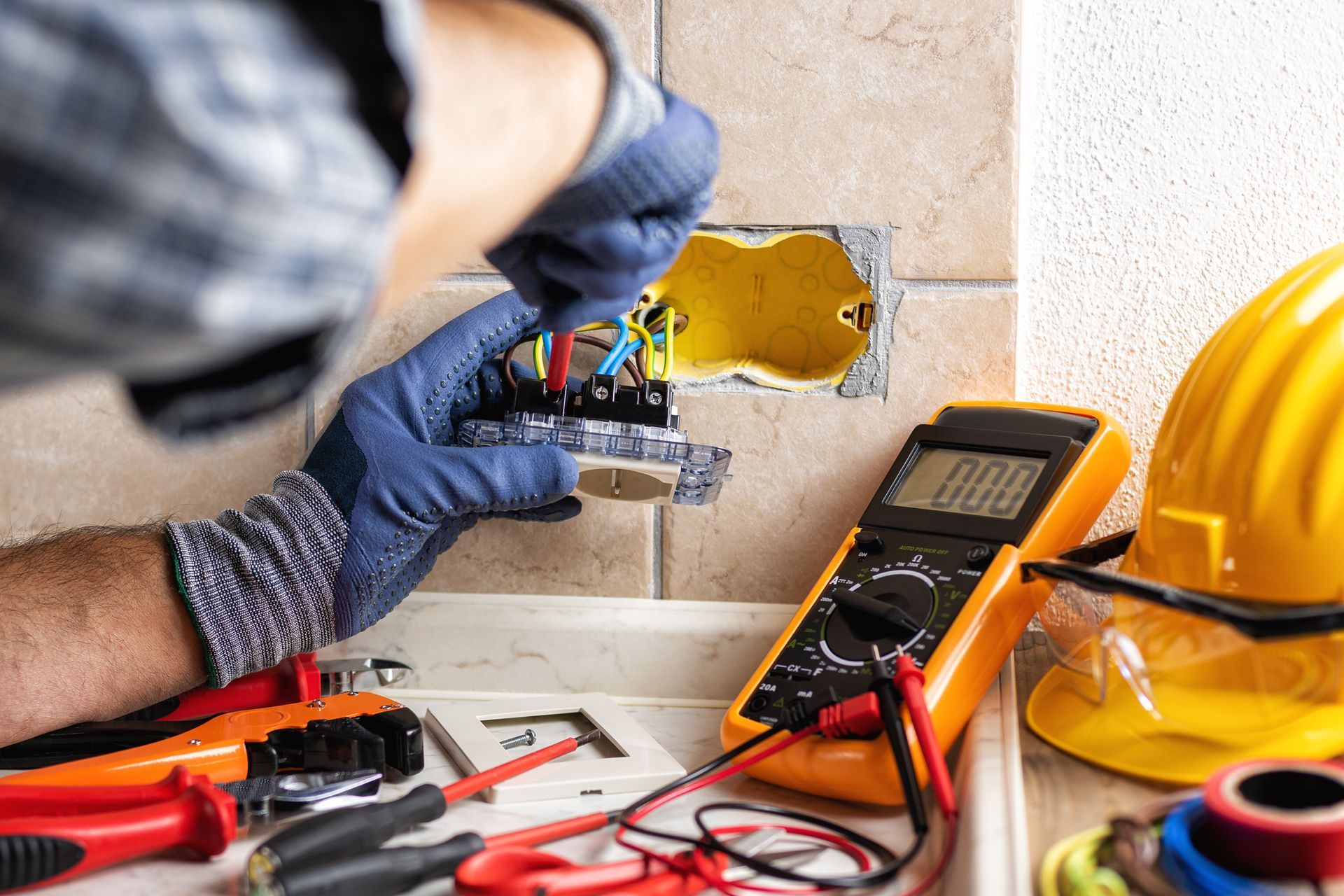
Electrical Symptoms You Should Never Ignore
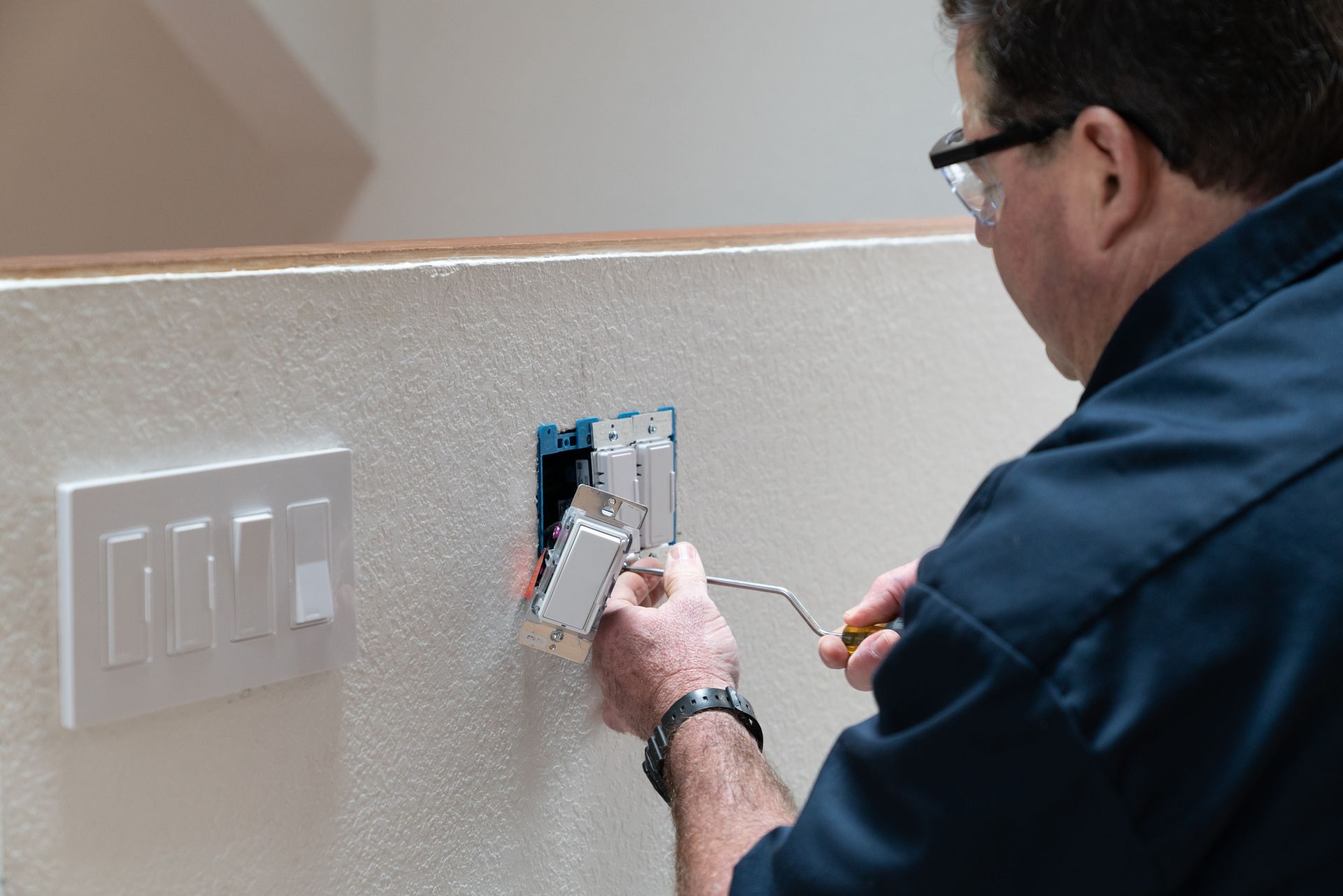
Electrical Upgrades to Consider for Your Home
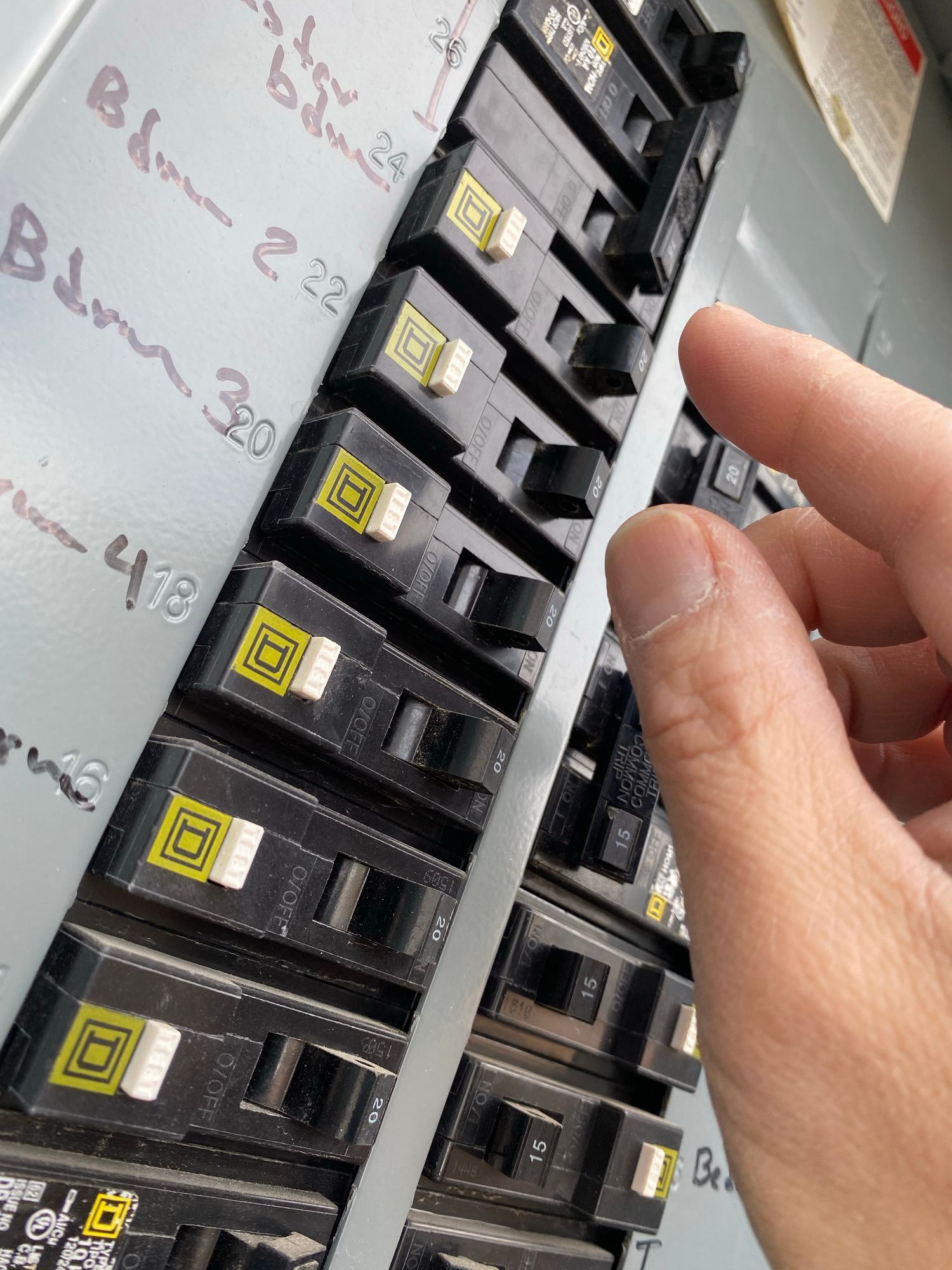
These Signs Indicate You Need an Electrical Panel Upgrade
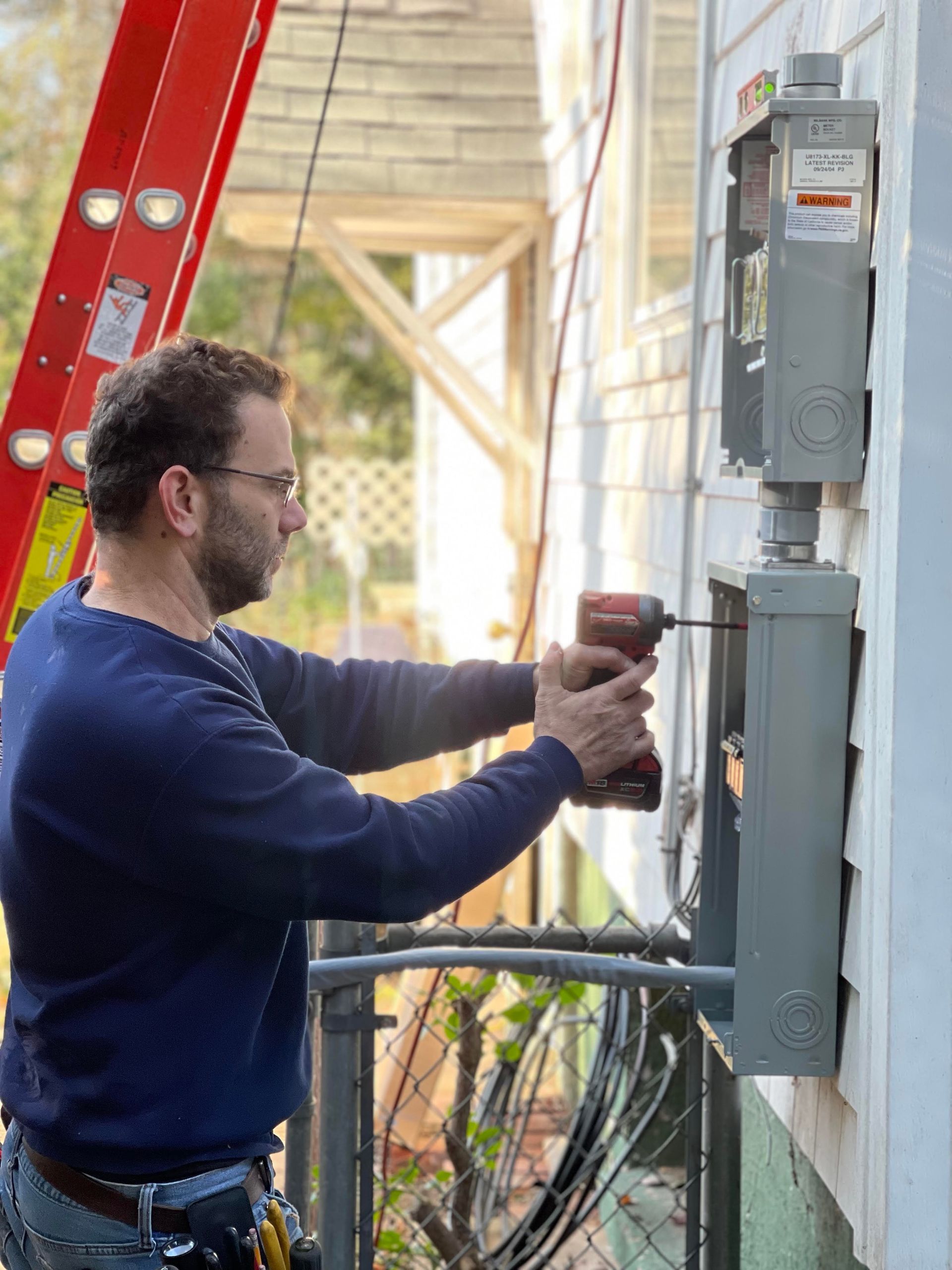
Electrical Repairs for a Safer Home
Anderson electric corp, proudly serving montclair, nj and the surrounding area.
Bloomfield, NJ
Montclair, NJ
Livingston, NJ
Cedar Grove, NJ
Fairfield, NJ
Caldwell, NJ
North Caldwell, NJ
West Caldwell, NJ
Glen Ridge, NJ
Essex Fells, NJ
West Orange, NJ
Little Falls, NJ
Clifton, NJ
Roseland, NJ
Woodland Park, NJ
All Rights Reserved | Anderson Electric Corp
Privacy Policy | Sitemap
License: 11056
Hours of Operation
Powered by contractor hq.
How To Troubleshoot No Power & Circuit Breaker Not Tripped
Things needed.
Screwdriver
Voltage meter with continuity checker
Working with electricity is extremely dangerous and accidents can result in death or serious injury. Only certified electricians should attempt this procedure.
You checked to make sure the appliance is plugged in, the device is switched on and the circuit breaker is not tripped, and yet the appliance is not receiving power. It is a rare occurrence, which is one reason why a situation where there is no power and the circuit breaker is not tripped can be puzzling at first. A circuit breaker, the connecting wire and appliance, however, are all components of a simple circuit that you can troubleshoot with a standard voltage meter.
Remove the screws securing your panel box cover and set the cover aside.
Check for voltage at the wire connection terminal on the circuit breaker in question. Verify the voltage is correct. No power at the connection terminal while the circuit breaker is in the On position indicates a defective circuit breaker.
Remove the receptacle cover from the outlet without power. Check for voltage at the wire connection terminals on the side of the receptacle. Verify the voltage is correct. No power at the connection terminal indicates a break in the wire. Power at the connection terminal but not at the receptacle plug indicates a faulty receptacle.
Switch the main circuit breaker to the Off position. Disconnect the wire from the circuit breaker and the receptacle. Twist the set of wires together at the receptacle box and check the wires at the panel box end with the continuity checker on your voltage meter. No continuity indicates a break in the wire.
Replace all covers and restore power after making the necessary repairs.
Recommended
- Electrical Services
- Light Installation
Circuit Breaker Is on But No Power to Outlet: Possible Reasons and Solutions
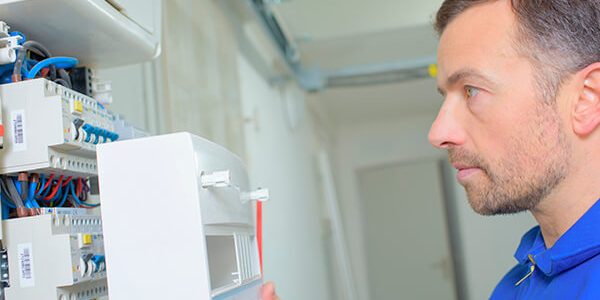
Electrical issues can be hard to identify, especially when they can’t be resolved by simply resetting the breaker. When it comes to lost power and electrical outlets not working, but the breaker isn’t tripped, the situation can be quite a head-scratcher. If your circuit breaker is on, but there’s no power to the outlet, there are several reasons that could cause this dilemma. You might notice that the power is out in part of the house, but the breaker is not tripped. Are you not looking forward to wasting time on electrical guesswork? We don’t blame you! Call the NYC electrical professionals at HandyKith ; they can repair anything!
Reasons Why Your Outlet Has Power but Doesn’t Work – And How to Fix It
There are a few situations you could run into when losing power – for instance, perhaps your electrical outlets are not working on one wall. Or maybe power is out in one room, but the breaker is not tripped. No matter what the situation is, if you’ve lost power and you have no idea why, follow these tips to remedy the problem.
- Try to reset the breaker. The first thing you want to do is make sure that your breaker isn’t tripped. Sometimes tripped circuit breakers will actually look like they aren’t tripped! To check, you’ll need to unplug all the devices that are running off of the breaker. It’s crucial that there are no appliances plugged in. Once that’s complete, reset the breaker by turning it off. After a few minutes, turn it back on once again. This will ensure that the breaker is on and sending power down to its outlets. If power begins to flow to the outlets after resetting the breaker, your problem is solved. If you still have issues, you could flip all of the breakers off and on, to make sure you haven’t missed the one that has failed.
- Check the GFCI reset button. This is another simple remedy that might apply when your circuit breaker is on, but no power is going to its corresponding outlets. Ground fault circuit interrupters are designed to act like mini circuit breakers that are capable of cutting off power. If your home is more modern, you could have ground fault circuit interrupter outlets.
- Check your outlets. It is possible that one of your outlets is damaged or that it has a loose wire. This issue could also be causing other outlets to lose power. It’s similar to old Christmas lights – when one quits working, there’s a chain effect of failures. The outlets in your home may be wired that way. If you determine that faulty wiring is the case, Handy Kith’s wiring repair experts can fix them up for you .
- Check the fuses. Look for charred glass or a broken filament inside the fuse. Both of those are evidence of a blown fuse due to a short circuit. If your fuse is blown, replace it with one of the same type and amperage.
- Replace the breaker. If you’ve confirmed that the aforementioned reasons aren’t causing the lack of power, then the issue is most likely that your breaker is not working. Replacing the breaker will solve the problem. For an expert circuit breaker installation , Handy Kith’s electricians can’t be beaten!
How to Fix the Problems
Now that we know about some of the causes of lost power and how to find the problem, let’s look at ways to fix the situation.
How to Reset a GFCI Outlet
Let’s say that your breaker isn’t tripped, but you have a partial power outage or that a single electrical socket is not working. In either case, before you can restore the electricity, the GFCI must be reset. Before you do that, it’s crucial that you ensure that it’s safe to do so. You’ll need to unplug or turn off all of the devices that are plugged into the circuit.
Press the Test button and listen for a click. If it doesn’t click, this means the ground fault interrupter has tripped. Now, press the “Reset” button until you feel it click; this should restore power to the outlet and to all lights and outlets downstream from it. If it doesn’t reset even after you’ve pressed the reset button, the problem that caused the GFCI to trip may still exist.
If that’s the case, turn off all of the light switches and unplug all electrical devices (like space heaters) connected to the affected circuit and then try resetting the GFCI once more. If it fails to reset, turn off the circuit breaker for the affected circuit, reset the GFCI, and then turn the circuit breaker back on.
If the GFCI still fails to reset (or if it immediately resets again), and the power went out in the whole house, this is indicative of a more serious problem, and it may require the assistance of a licensed electrician.
Bad Connection
Let’s say that after checking the breakers and trying to reset the GFCI, you still haven’t restored power to the outlet. Perhaps power is out in one room, and the breaker is not tripped, but the electrical socket is not working. The next step is to take the outlet out of the box and check for any loose connections. There are three main types of loose connections to look for when one outlet is not working:
- Loose terminal screws
- Loose stab-in connections
- Loose wires at wire connectors
When you take out your outlet and check the outlet box, you might find one, two, or even all three of these loose connections.
Check for Loose Wires
- First, check the screw terminals for any loose or broken wires.
- Cautiously bend the wire at each screw terminal. If the wire turns under the screw, or if the screw moves, this means that the wire is loose.
- Keep an eye out for any charred, broken, or corroded wires and screws.
- If you find that the outlet has a loose connection, replace it.
- To install the new outlet, you’ll need to bend a loop in the ends of the ground, neutral, and hot wires.
- Connect the hot wire to the brass screw, the neutral wire to the silver screw, and the ground wire to the green ground screw.
- Loop the wires around the screws in a clockwise direction, and then tighten them.
- If the outlet you’re replacing is wired with pairs of hot and neutral wires (which are under all four screws), connect the pairs to a third six-inch length of wire – called a pigtail – under one wire connector.
- Lastly, connect the loose end of each pigtail to their corresponding outlet screws.
Fixing Loose Wires at Stab-In Connections
To save time, some electricians wire outlets by pressing stripped wires into holes on the outlet’s backside. This wiring method doesn’t break electrical code, but the wires can loosen over time, causing problems. To fix this, follow these steps:
- When troubleshooting the dead outlet, look for stab-in connections.
- To check for loose connections, tug each wire gently.
- If you’ve found any loose connections, you shouldn’t just stick the wire back in. Instead, you need to cut and strip the wire’s end, then connecting it to the screw terminal.
If your wiring is aluminum instead of copper, it would be best to call a licensed professional to work with it.
Checking Wire Connectors for Loose Wires – Tug Wires at Connectors
Here’s how you can check for loose connections by tugging.
- Make sure that the main circuit breaker is turned off
- Grasp the wire connector.
- Tug on each wire in the bundle cautiously to see if any are loose.
- If you discover a loose wire, remove the wire connector.
- Cut and strip all of the bundle’s wires. When doing so, expose between ½ – ¾ inch of fresh copper wire.
Reinstalling the Connector
To reinstall the connector, follow these steps:
- Read the label on the wire connector packaging to determine the correct number of wires to connect.
- Gather the wires, make sure their ends line up, and then twist on a new write connector. Make sure to twist it on clockwise.
- Turn the main circuit breaker on again.
- Test the outlets again to see if the problem has been fixed.
What if it isn’t a wiring problem? It’s possible that just the breaker is not working.
Replacing a Circuit Breaker
If you find that your breaker trips easily (or doesn’t trip when it should), it’s hot to the touch, or it can’t be reset, then it will need to be replaced. If you aren’t confident in your ability to replace it yourself, hire a professional electrician. You don’t want to constantly find yourself in a situation where the electrical outlets are not working, but the breaker is not tripped.
When replacing a circuit breaker that’s on, but there’s no power to the outlet, you’ll need to have the following supplies on hand:
- A new circuit breaker; make sure it is the same brand, model, make, and size as the original one
- An insulating surface to stand on
- An independent flashlight, screwdriver, and wire strippers
- Cable connectors
- A voltage tester
To replace your circuit breaker when the outlet stopped working, but the breaker is not tripped, follow these steps:
- Turn off the circuit breaker’s branches individually.
- After that, turn off the main circuit breaker.
- Use the voltage tester to test all of the wires. You need to be sure the wires are dead before moving on.
- Take off the panel cover.
- Disconnect the breaker’s wire from the load terminal.
- Pry out the old breaker.
- Place the new breaker in the spot, and push it in carefully.
- Attach the wire to the load terminal.
- Tighten any loose terminals, and then replace the panel cover.
- Turn on the main breaker and then individually switch on the branches.
- Test with a voltage tester.
If you are still having problems after replacing the breaker (for instance, your breaker is not tripped but you have a partial power outage), test all of your house’s appliances. If that fails, get in contact with a professional electrician.
Get Your Power Back in No Time with HandyKith!
Remember that working with electricity can be pretty dangerous! If your electrical outlets aren’t working but your breaker is not tripped, your case could be unique and the situation may be complicated. If you have tried everything and the problem still prevails – like the circuit breaker is on but there’s no power to the outlet – contact our professionals. Handy Kith’s expert electricians have plenty of experience dealing with breakers that didn’t trip accompanied by no power. If you’re ready for us to help with your breaker headache, reach out to us today . You’ll be able to put this problem of the breaker not being tripped but no power behind you in no time.
Request Lighting Instalation Cost
Request project cost.
Your name *
Your Number *
Your email *
Describe The Scope Of The Job
Outlets Stopped Working, But Circuit Breaker Not Tripped (Quick Fix!)
It’s incredibly frustrating when one or more outlets suddenly stop working, but if you find that the problem isn’t a tripped circuit switch, the situation becomes even more confusing.
So what now? What to do after you check and realize that flipping the circuit breaker’s switch isn’t the solution to your problem?
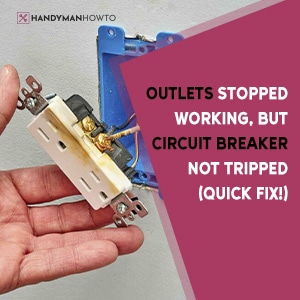
We’ll show you some fast solutions – as easy as turning your circuit breaker back on – you should attempt before contacting an electrician.
Understanding Your Electrical System
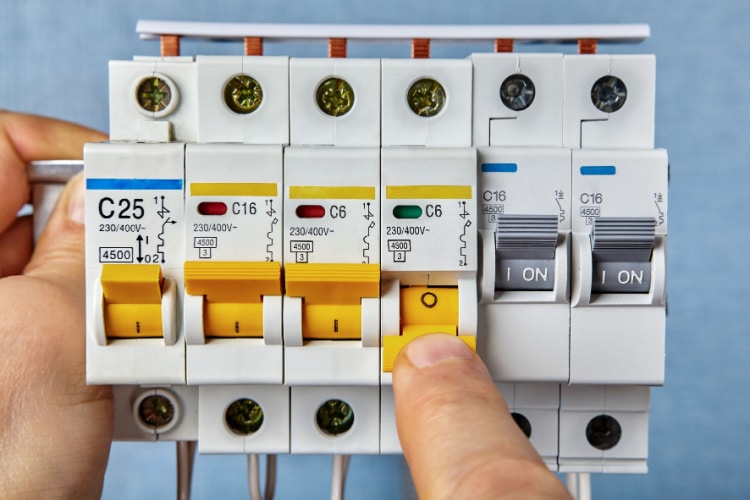
Before we get to the potential fixes for inactive outlets when circuit breakers haven’t tripped, let’s first try to understand the electrical system a little better.
The electrical system in your house comprises many circuits linked to your circuit breaker panel. Each circuit runs a different section of your home, such as a bedroom, living room, or kitchen, and operates a set of outlets, switches, and lights from that area.
If the current in a circuit surpasses a predefined threshold, for example, due to an overload or a lightning strike, the breaker will activate and cut off power to the outlets or lights wired to that particular circuit . Such action is needed to protect your electrical system and devices from damage or fire.
Top Causes of Outlet Failure
Now, if your outlets have stopped working, but the circuit breaker hasn’t tripped, there are a few possible causes behind the problem, such as:
- Faulty outlet: Over time, outlets become worn or damaged and must be replaced.
- Unsecured wires: The screws that keep the wires in position may become loose and cause the wires to separate from the outlet.
- Too many power surges: When your circuit has been subjected to excessive power surges , the outlets may stop working altogether.
- Tripped GFCI outlet: If an outlet stops working and is protected by a GFCI (Ground Fault Circuit Interrupter), the GFCI may have tripped and ceased providing power to all connected outlets.
- Defective circuit breaker: Even if it hasn’t tripped, it could be faulty or not making appropriate contact with the outlets.
- Old outlets: Outdated outlets in the electrical system may also stop receiving electricity.
Quick Fixes for Dead Outlets
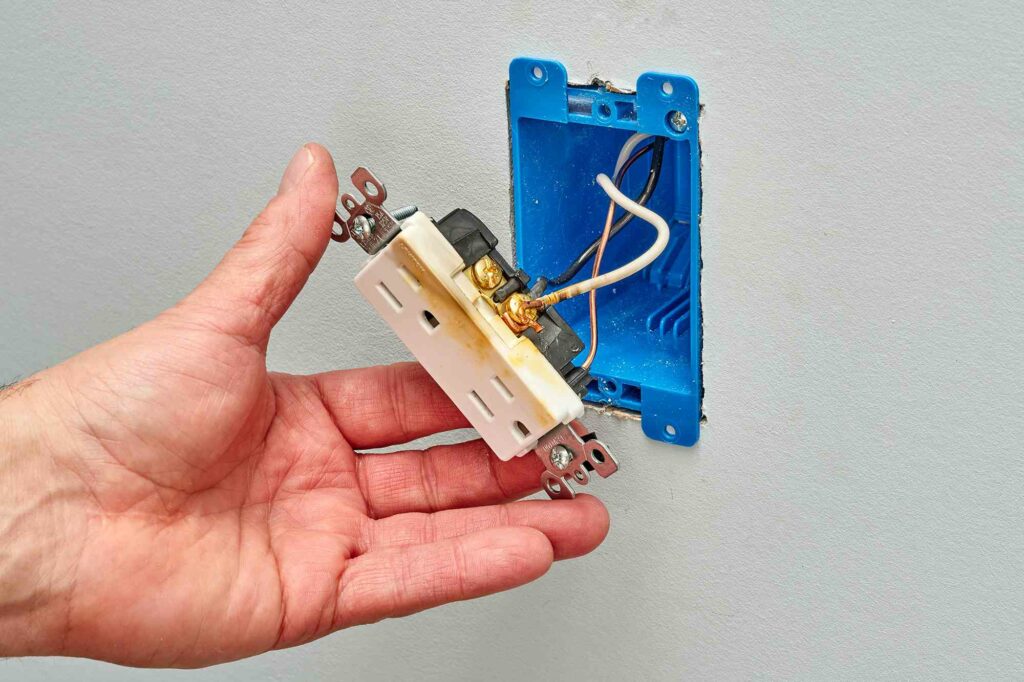
If your outlets have stopped working, but the circuit breaker hasn’t tripped, there are a few things you should check. We’ll walk you through each of them.
1. Make Sure a Switch Doesn’t Control the Outlet
To begin, confirm a switch doesn’t control the outlet. Some houses have outlets wired to a switch, so you must turn it on for the socket to receive electricity. If you have that kind of outlet, turn on the switch to see if the power returns.
2. Check the Other Outlets in the Same Circuit
If numerous outlets from the same circuit aren’t providing electricity, the issue isn’t with the outlet but with the circuit. The simplest way to test this is to plug a device into all outlets installed on the same circuit. If none work, your circuit breaker is faulty and should be examined by an expert.
3. Ensure That a Dead Device Isn’t the Problem
We might be led to believe that an outlet has failed when, in fact, we are working with a faulty gadget. To see if this is the case, put another gadget into the same outlet. If the device receives electricity, it’s time to replace the defective device with a new one.
4. Check for a Tripped GFCI Outlet
Another possibility is a faulty GFCI (Ground Fault Circuit Interrupter). GFCI outlets are frequently located in bathrooms, kitchens, garages, and outdoor spaces . They safeguard individuals from electric shock by turning off the power when there is a ground fault.
If a GFCI outlet trips, it will stop electricity to all outlets that receive protection. Find the GFCI outlet and hit the “reset” icon to resolve this.
5. Reset the Circuit Breaker
If the GFCI outlet was not the solution to your issue, you should examine the circuit breaker next. Although, if the circuit breaker didn’t trip, it might be defective or not making appropriate contact with the outlets. So, go ahead and reset it: turn the circuit switch off and then back on.
6. Secure Loose Wires
If resetting the circuit switch hasn’t returned power to your outlets, the issue could be loose wires. Over time, the screws that keep the wires in position become loose, causing them to separate from the outlet and eventually cut all power.
To correct this, switch off the electricity to the outlet at the circuit breaker box, remove the cover plate from the outlet, and tighten the screws that secure the wires to the outlet.
7. Replace Your Dead Outlets
If none of the above solutions work, the issue could be a defective outlet you must change.
Another reason to replace a receptacle is if it has reached the end of its life. As a receptacle matures, its connections can become worn or corroded, preventing electricity from flowing.
It’s critical to note that if you are not familiar with electrical work, you should not try to change an outlet on your own. Electrical work is hazardous and should only be carried out by a certified technician.
In conclusion, if your outlets have stopped working, but the circuit breaker isn’t tripped, several reasons could be the cause, followed by some easy fixes — so let’s summarize everything we’ve learned from our informative article!
The most common reasons for dead outlets are faulty or outdated outlets, loose wires, malfunctioning circuit breakers from too many power surges, or tripped GFCI outlets.
Before calling an electrician, check that a switch does not regulate the receptacles. Then, check other receptacles on the same circuit to see if the issue is with the circuit itself.
If only one outlet is not functioning, determine if you are dealing with a faulty gadget or socket. Another item to check is the GFCI outlet. If it has tripped, switch it back on. Check for loose cabling or outdated outlets as well.
Last but not least, use caution when dealing with electricity and cut off the power to the circuit before making any fixes!
- Products Loading...

- Product Information
- Solenoid valve
- Butterfly valve
- Check valve
- 5/2 & 4/2-way pneumatic valves
- All product information

Selection Criteria & Wizards
- Valve sizing calculator
- Chemical resistance table
- Solenoid valve selection guide
- Thread standards
- AC or DC coil
- All selection criteria & wizards

Application Examples
- Reverse osmosis
- All application examples

- Installation & Troubleshooting
- Solenoid valve installation
- Electric ball valve installation
- Common solenoid valve issues
- Preventing solenoid valve noise
- Replacing a coil
- All installation & troubleshooting
Technical Resources
- Case Studies
- Ordering Process
Support & Tech Advice
- Payment Methods
- Return & Warranty
- Get Help & Advice
- [email protected] [email protected]
100,000+ Products in stock
Same day shipment
Product experts available
Customers rate us: 4.95 / 5
- Tameson's Technical Information Center
- Installation and Troubleshooting
Tripped Circuit Breaker Troubleshooting
February 16, 2023 by Scott Louis Simonson
How To Troubleshoot and Reset a Tripped Circuit Breaker
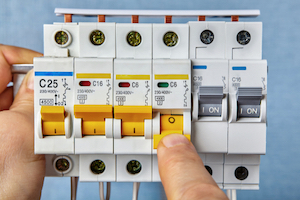
Figure 1: Turning on a circuit breaker on a control panel after it tripped due to overload.
Circuit breakers trip to protect against overloading and short circuits, but this interruption in the electricity supply can be inconvenient. Therefore, it’s helpful to know why the circuit breaker tripped so the issue can be resolved as soon as possible. This article covers various issues that lead to circuit breaker tripping, why, and possible solutions.
Table of contents
What is a circuit breaker, safety considerations, how to reset a circuit breaker, other circuit breaker issues, view our online selection of circuit breakers.

Circuit Breakers And Accessories
A circuit breaker protects electrical systems from damage due to abnormal electrical conditions, such as overcurrents, short circuits, and faults. It consists of a trip unit that detects the fault, a mechanical mechanism that opens the contacts, and an arc quenching system that extinguishes the arc generated during current interruption. Once the fault is cleared, the circuit breaker can be reset, allowing normal operation to resume.
The most common reason a circuit breaker trips is due to an overload in that circuit (see next section). If there is any indication of a different issue, it is highly recommended to hire a professional electrician to inspect and repair the circuit breaker. Making a mistake when working with electricity can be fatal.
Follow these steps to reset an individual circuit breaker:
- Locate the circuit breaker panel in the building. It might be in the basement, garage, or utility closet. Breakers in the panel should all be labeled to clearly show which breakers control power to which rooms in the building.
- Determine which circuit breaker tripped. The tripped breaker’s switch will be in the opposite direction than all the other breakers’ switches.
- Flip the switch to restore power. If it trips again, unplug all of the appliances connected to the circuit then flip the switch again.
- Some appliances run automatically (e.g., a fridge). For appliances that don’t turn on automatically, turn them on to test whether or not they overload the circuit.
Reset the main circuit breaker
In the case of a complete power outage, first, check if nearby buildings still have power. If they do, try to restore electricity by resetting the main circuit breaker. The main circuit breaker connects power to the entire circuit breaker panel, in other words, it controls power to the entire building. In the circuit breaker panel, the main breaker is the largest circuit breaker and is likely labeled “Main.” If it is not located in the breaker panel, the main circuit breaker is probably outside, next to the electricity meters.
- Switch off all the circuits in the breaker panel.
- Switch the main circuit breaker on and off two times.
- Return to the circuit breaker panel and switch all the circuit breakers back on.
If the power does not return to the building, contact an electrician.
Circuit breakers encounter other issues beyond overloading. In most situations, it’s advisable to get help from a professional electrician, as mentioned above.
The circuit breaker is buzzing
A circuit breaker buzzing under load can be a normal situation or a critical situation. It’s normal for circuit breakers to hum softly due to electricity passing through them. If there is a concern, pay attention to the buzzing sound to determine whether it gets louder. If it doesn’t, there is no issue.
If the buzzing sound is medium to high, the circuit breaker is overloaded but hasn’t tripped. If there is a sizzling sound, there are arcs of electricity occurring due to loose circuits. Both situations are dangerous and may lead to a fire or electrical damage.
The circuit breaker is getting hot and trips
A circuit breaker should not exceed 60 °C (140 °F). The temperature is OK if plastic components can be touched without burning the finger. Reasons why a circuit breaker overheats are:
- Loose connections: Electrical resistance increases with loose connections, raising the temperature.
- Current limit: The current may be just below the tripping level. If this occurs for a long time, the breaker can heat up to dangerous levels.
- Bad breaker: The breaker may have broken and needs to be replaced.
The circuit breaker didn’t trip but there is no power
Sometimes when the circuit breaker trips, the switch only moves slightly instead of moving all the way to the off position. This makes it seem that the breaker didn’t trip. Try resetting the breaker anyway.
Newer homes have outlets with ground fault circuit interrupters (GFCI) (Figure 2). Try to return power by pushing the reset button on the outlet. In some older homes, outlet circuits are in a line, so if one outlet has issues, it can cause issues with all of the other outlets. Finally, of course, the breaker did not trip because it is broken.
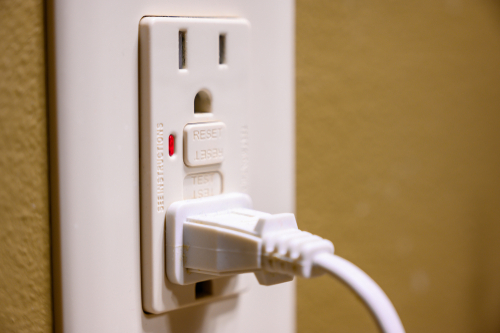
Figure 2: An outlet with a ground fault circuit interrupter
The tripped circuit breaker will not reset
The usual reason why a circuit breaker does not reset is that it is still overloaded. Unplug all the appliances connected to the circuit and try again to reset it. If this does not solve the situation, there might be a short circuit. This means the hot wire connected to the breaker is touching the neutral wire. The breaker trips as a safety mechanism in this case.
Another reason why circuit breakers keep tripping can be a ground fault. A hot wire is touching a bare ground wire or metal component of an appliance or equipment. Ground faults are very dangerous in wet environments, such as a kitchen or bathroom.
The most common reason a circuit breaker trips is because it is overloaded. This is solved by unplugging the appliances from the circuit and resetting the switch. If this doesn’t work, contacting an electrician is highly recommended to avoid danger. Before deciding to replace one, read our guide on how to replace a circuit breaker .
How do I find what is tripping my circuit breaker?
If a circuit is overloaded, unplug all appliances connected to the circuit. After a few minutes, plug back in the appliances one at a time until the circuit breaker trips again.
Should a circuit breaker be immediately reset?
Immediately reset a tripped circuit breaker only if it’s certain that the issue is overloading. If it’s not certain, consider contacting a licensed electrician to identify the issue.
What to do if the main circuit breaker keeps tripping?
Look for overloaded circuits, malfunctioning appliances, and whether the breaker itself is defective. Try resetting the breaker and if it continues to trip, contact an electrician.
View our selection of products
View our selection of products:.
- Choosing a selection results in a full page refresh.
- svg]:fill-accent-900"> 826K
- svg]:fill-accent-900"> 622K
- svg]:fill-accent-900"> 246K
- svg]:fill-accent-900"> 45K
Why Is My Circuit Breaker Tripping? 4 Potential Problems and Solutions
By Glenda Taylor , Bob Vila , Evelyn Auer
Updated on Dec 15, 2023 4:16 AM EST
We may earn revenue from the products available on this page and participate in affiliate programs. Learn More ›
What You Need to Know
- A tripping circuit breaker could be a sign of an overloaded circuit, a short circuit, a ground fault, or a worn-out breaker.
- Homeowners will want to hire an electrician to determine the cause of the frequently tripping circuit breaker.
- Electricians may recommend replacing the circuit breaker, installing GFCI outlets, or rewiring part or all of the home.
Q: Every few hours—sometimes minutes!—my living room and one side of my kitchen lose electrical power. I’ll check the breaker panel and, sure enough, a circuit breaker has tripped…again. Should I call an electrician, or is there a simple DIY fix I can try first?
A: While it’s frustrating when a circuit breaker keeps tripping, they are important safety mechanisms. Designed to shut off the electrical current when something goes wrong, circuit breakers are one of the best ways of protecting a home from an electrical fire. “When a circuit breaker trips, typically it is because we use too much electricity, which causes it to overload and turn off,” says Christopher Haas, expert electrician and owner of Haas & Sons Electric in Millersville, Maryland. For those who need an electrical panels 101 refresher course or aren’t sure how to reset circuit breakers, each breaker has an on/off switch and controls a separate electrical circuit in the home. When a breaker trips, its switch automatically flips “off,” and it must be manually turned back on to restore electricity to the circuit. For those wondering, “Is it dangerous if a circuit breaker keeps tripping?” the answer is that it can be, depending on the source of the problem. An electrician can ultimately deal with the root issue, but a little sleuthing will reveal whether it’s something that’s easily remedied.
In many cases, the cause of a circuit breaking tripping is an overloaded circuit.
A circuit overloads when more electrical current is being drawn through the wires than they can handle, tripping the circuit breaker. If this happens, there may be a few additional signs:
- Buzzing noises coming from outlets
- Devices charging slowly
- Electrical outlets not working
- Flickering lights
- Scorch marks on outlets and light switches
If a circuit breaker keeps tripping in one room, homeowners can test for circuit overload by turning off all the switches in the affected area and unplugging all appliances and devices. After the breaker is flipped back on, the devices can be turned back on one at a time, with homeowners waiting a few minutes in between to see if the circuit remains on. If the breaker trips before all the appliances are turned on, the experiment can be repeated, this time turning them on in a different order. It may be necessary to do this several times to find out how many appliances can be operated at once before the circuit overloads.
“As a short-term solution, you can unplug unnecessary appliances to prevent tripping circuit breakers. You may still get some trips, but you can limit them by unplugging devices that you don’t need to use,” advises Dan Mock, vice president of operations at Mister Sparky , an electrical company with 90 locations in the U.S. The best long-term solution, however, is to pay an electrician for the cost to rewire the house and add additional circuits. The cost to replace an electrical panel is about $1,274 on average.

Other times, the issue may be caused by a short circuit.
A “short” circuit means that two wires that should not be coming into contact are inadvertently touching, triggering a sudden surge of electricity through the wires. A short can occur in an outlet, a switch, or within an appliance if wires are loose or have been chewed through by mice or pets. Some signs of a short circuit include:
- Popping sounds
- Discolored outlets or switches
- Burning smells
Testing to see if an appliance has a short is similar to testing for an overloaded circuit. When an appliance that has a short in its wiring is turned on, it will immediately trip the circuit. Homeowners can also try plugging it into an outlet in a different room. If the breaker for that room trips, there’s a short in the appliance (if it’s unclear what breaker goes to what room, the breaker can be identified with one of the best circuit breaker finders ). Electrical shorts can be a major fire hazard, so it’s a good idea to call a licensed electrician for this circuit breaker repair. It’s wise to stop using the outlet or appliance until a pro takes care of the problem.
Another potential cause of a circuit breaker tripping is a ground fault.
A ground fault occurs when the electricity running through a home’s wiring diverts from the wiring loop and travels to the ground, usually due to faulty wiring or water infiltration in an outlet or switch box. Water is a conductor, which is why walking through puddles is often listed as something not to do in a power outage in case of downed power lines. Once water makes contact with wires, electricity can jump from the wiring loop and follow the water trail. This creates a surge in electricity leading to a tripped circuit breaker. If a person comes in contact with the electricity that is on its way to the ground, this can result in electrocution. Homeowners may notice a few signs of a ground fault, including:
- Tripped GFCI (ground fault circuit interrupter) outlets;
- A burning smell coming from an outlet; and
- Lights flickering.
Newer electrical breakers have features designed to protect against the danger of ground faults. According to Haas, “Ground fault breakers sense electricity going to earth as opposed to going through the wires of the circuit. You’ll find [these] for bathrooms, kitchens, garages, exteriors, and basements.” GFCI outlets are another safety feature that shut off the electric current within a fraction of a second of sensing a ground fault.
If a ground fault is the problem, the cause of the errant water must be discovered and repaired, and any damaged wiring must also be replaced. It’s also a good idea to install GFCI outlets in rooms where water is commonly used. A GFCI outlet costs $210 on average.
Sometimes a bad or worn-out circuit breaker can be the culprit.
In some cases, the circuit breaker itself may be faulty. Breakers that are old, damaged, or were installed incorrectly may trip frequently for no apparent reason. Alternatively, faulty breakers may not trip when they are supposed to, leaving the home at risk of electrical fire. Some signs of a bad circuit breaker include:
- The circuit breaker getting hot and tripping frequently;
- The circuit breaker won’t reset;
- It has been over 10 years since the breaker was last serviced; and
- The breaker has scorch marks.
An important electrical safety tip to keep in mind is that resetting a breaker over and over again can cause what is called an arc flash, which is a small electrical explosion that can be deadly. If resetting the breaker once does not remedy the issue, it’s a good idea for the homeowner to hire an electrician near them who knows how to replace a circuit breaker safely. Mock warns, “Don’t take any chances with circuit breakers. Instead, call a licensed electrician who knows the safe ways to replace breaker boxes, upgrade circuits, and diagnose potential electrical problems in your home.” Wiring a breaker box is a job to leave to an experienced electrician.
A professional electrician can help determine the specific cause of a frequently tripping circuit breaker.
Most circuit breaker problems—aside from those explained in the sections above—will need to be inspected and addressed by a licensed electrician. According to the Electrical Safety Foundation International (ESFI) , each year “thousands of people in the United States are critically injured and electrocuted as a result of electrical fires, accidents, [or] electrocution in their own homes.” While homeowners may be tempted to save on electrician costs by attempting circuit breaker replacement or repair themselves, electrical work is not suitable for casual DIYers. “Yes, you have to pay, but you can save many hours of head-scratching by hiring an electrician. Electricians will also have all the right tools for diagnosing and repairing the circuit,” Haas adds. “Lastly, they will come with a warranty/guarantee should something arise, and they will typically return at no additional cost.”

- Forum Listing
- Marketplace
- Advanced Search
- Electrical Trade Topics
- Residential Electrical Forum
Huge spark and breaker didn't trip
- Add to quote
Hey guys so I was changing out a bad dimmer switch for this lady and I was doing it with power still on. I accidentally touched the hot wire to the metal box and there was a huge explosion. I thought for sure the breaker tripped but no it still had power. This house is not that old maybe built in the 70s or 80s and I think it wasn't wired professionally. It is wired in an older Romex and metal boxes. I also changed out a melted outlet and an outlet that was sparking due to the wires touching the metal box and that one when I took the outlet out half the wires fell out of the stab in locks due to the wire being like an eighth inch long in the stab in. The lady also pointed out that a switch was getting hot around the box when I opened that one up I noticed the Romex had corroded where it was in contact with the metal clamps in the box and was sparking and not tripping the breaker until I pulled on it then a huge explosion and that one did trip the breaker. It's a rental property and I told the property manager it's not professionally wired and needs to be fixed. I guess my questions are. A. Why wouldn't the breaker trip when I changed out the dimmer and touched the hot to the ground and made a huge explosion? B. I'm not big into remodels but how would you address this change out all outlets and switches and make sure all is grounded? Check ground at panel? Or C. Tell the property manager they need to rewire the entire house? I know she won't do this because it's a rental and would have to put the place under construction but I think it's needed there are also plumbing leaks everywhere in the house and there is no heat vents going to the second floor and there is mold everywhere in the basment. Or D. Walk away from this **** hole? I would feel bad doing this cuz there are a lot of kids in that house and I have a conscious.
It's common for a 40 year old breaker to hold after a boom. The action gets stiff after a period of years. If it has tripped before, its operating characteristics may have changed. A rewire isn't necessary. What you may want to do is re-device it and inspect the wiring at each box, cutting it back to fresh copper and possibly pigtailing. It's a rental, though. Landlords don't like spending money. Anything you recommend that costs money will be thrown out the door along with you and your toolbag.
That's exactly what I'm leaning towards. All new outlets and switches and check wiring at each box and make sure gfis are where they are needed. The light fixtures are out of date and falling apart as well (slumlords). I did mention that to the manager too. Do you guys ever supply light fixtures in this type of situation where you are dealing with a property manager and not the owner of the house? I mean if you install all new outlets and switches and then you have a light fixture with a socket that's hanging out that's no good.
I remember many times that I purposely shorted out a circuit in order to trip the breaker, and the breaker didn't trip even with new SquareD QO's. The lights would dim, but no trippy. Why? Because there wasn't enough current being pulled to trip it. The length of the run limited it, maybe not-so-great connects contributed to that. Just because you see an arc, it doesn't mean enough current flowed to trip the breaker.
Most likely Kenny clamp devices were properly installed to choke those nasty electrons on those outdated systems and did their job perfectly as described by the manufacturer of them.
I don't believe a mag trip standard exists for resi 'mini ocpd's' So if one is far enough from the serving Xformer , it can arc & bark all day ~CS~
It's probably academic because they probably won't spend the money, but I might consider a panel upgrade more important than the device wiring if you have to do one or the other. Replacing devices will be an improvement for sure but without reliable functional OCPD it could all be for nothing.
Make sure the box is properly bonded? Did you read 120 from the hot to ground at dimmer? Sent from my SM-G950U using Tapatalk
Chevys10zr2 said: I guess my questions are. A. Why wouldn't the breaker trip when I changed out the dimmer and touched the hot to the ground and made a huge explosion? Click to expand...
Btharmy it would be nice to shut off the breakers but have you ever worked in an old **** hole before? Most times I have the panel is incorrectly labeled or not labeled at all. The first time was an accident and the second time I wasn't expecting a corroded wire under the clamp. I have been an electrician long enough to know what to touch and what not to. I didn't get shocked at all.
Turn off the main breaker when you are unable to identify a proper branch circuit breaker. You ain't been an electrician long enough if you can't think of that.
I couldn't even count how many times I have had to work on things live. You don't always get the luxury to turn of the power.
I have been an electrician long enough to know that I shut **** down way more often than I used to. How do you think you looked to that customer? Plus that dimmer is probably screwed. I used to do stuff hot or trip it all the time but not anymore. It just makes you look amaturish. Just not worth the 10 minutes it would have taken to find the breaker.
When you get to my level of awesome, you set the stage for what "professional" is. If a customer sees me blow something up, they then think that blowing things up is the correct way to do it and all the other guys who didn't blow it up were lacking in skills and experience.
I'm just lazy. Why make 2 extra trips down to the basement? That profit comes right out of my pocket. Lever Nuts have made working live even easier.
The dimmer switch was junk I was replacing it with just a regular switch.
Splatz I see what your saying but I feel like even if I did a panel upgrade the majority of the problems are in the boxes. The fact that someone didn't use wire nuts for the ground wires , didn't bond the metal boxes and stripped the wires maybe a quarter inch into the stab lock's is most of the problem.
My advice. Don't work live. Plumbers shut off the water to install a toilet or sink. Gas fitters/plumbers shut off the gas to install a flex line for a stove or dryer. And yet People have an expectation that we should work live and why? Because some electricians continue to work live because whining customers don't want to shut off their computers, lose their heat or lose their lights for a period of time?
bostonPedro said: My advice. Don't work live. Click to expand...
Boston yea it's not my favorite thing to do. I don't challenge myself to work live, but it's kinda part of the job sometimes. Just like plumber's try not to get **** on their hands. We try not to get shocked sometimes. But I didn't start this to talk about working live. We can start another thread about that.
Fair enough. I wont comment about safety on your thread anymore
Plumbers often don't shut off the gas, they let it come out while they change fittings on the fly. I was even told here that was the standard SOP so rhere was no issue re-lighting other equipment. Comparing one trade to the other is silly.
HackWork said: Plumber don't shut off the gas, the let it come out while they change fittings on the fly. I was even told here that was the standard SOP so rhere was no issue re-lighting other equipment. Comparing one trade to the other is silly. Click to expand...
Apart from the fact that I don't like working live much myself, IMO working on sensitive electronic devices live is a recipe for wrecking the device. Sent from my SM-G920W8 using Tapatalk
What type of panel are you dealing with? Zinsco? FPE? The liability is on you, so keep that in mind. Romex arcing at the clamp? Hmmmmmm. Are there smokies in the house? Are they working?
What liability are you are talking about?
Joe when I took the clamp out the wire had zero insulation on it all the way to the copper so I pulled enough slack to cut that part off and rewired it to a new switch. I guess that's kinda what I'm asking I started my own gig and am licensed and insured. I don't do much service work I try to stick to new construction and remodel where we install all new wire/boxes and rip old **** out. I do some service work but where do you draw the line. I don't wanna put a bandaid on a bullet wound. I was a little overwhelmed with this lady because she was not happy the landlord won't do anything for the house. I was just gonna leave but she was showing me a few things that I thought were potential fire hazards and there were a lot of kids in the house. So I installed the 2 new outlets ,took the old dimmer out that was making the light go on and off constantly and fixed the switch box she said was getting warm due to that bad wire. Im debating on whether I am better off leaving this 1 alone. I feel for the family and was gonna try to get the manager to get some work done there. I don't know the best way to tackle this house if it would be install all new outlets and switches and make sure things are grounded? Or install new service or just make sure it's properly grounded. I didn't check for smoke detectors. I should have kinda dumb on my part.
If you realised the breakers didn't trip after a earth fault then I would of advised you to turn all power off and carry out a full electrical test and inspection. I am guilty of changing live fixtures but the fact that you causes 2 direct love contacts and arc flashing shows you are working in a dangerous and unprofessional manner by not safely isolating the supply whilst working on it .I suppose a duty of care would of been to stay an fix all the problems for this person as they have asked you to do electrical work because they have obviously judged you to be an educated tradesman in your profession. And I don't think you have done the correct thing here . I would certainly return and tell them you need to carry out repair works immediately and you didn't have time the last time you were there and did not anything then because you did not want to raise alarm or concern to them . But know you are able to do the work. If they don't want the work done or can't pay for it then u would write a full report on your recommendations and give this to the home owner. If anything happens there you will be held accountable especially the fire risk in the fuse board. Make a full report and price for the time to carry out full test and install correct earthing system. I am guilty of the exact same thing you have done here but it is just down to sheer luck nothing happens and no one gets injured. But you need to realise that you have a big responsibility in this trade of you carry on doing it and that is understand you are a high position of health & Safety authority that is you decide whether a property is safe from shock and fire risk and is safe does family to continue to live there . This is your call and it is a big call. You got it wrong this time but you can make it right
Thanks for the advice mac next time I change out an outlet I will shut down the whole house.
Don't be a smart ass. You are the one that cost you or your boss an embarrassment and money out of someones pocket. That customer is gone.
Don’t worry Chevy. I got your back against these rookies.
I mean everyone is caught up on working on stuff live and no that customer is not gone. They like me and want me to come back. If you have no professional opinions about the actual questions being asked please don't chime in. Thanks
Agreed. A professional can change an outlet hot. Anyone who says differently should be over at Mike Holts forum.
Hack I always appreciate your advice what would you do in this situation. Besides turning of a breaker to work on stuff.
Cmon now, you are supposed to ask me what else did you mess up on
Many years ago when I did a dimmer change the new dimmer came with inf osheet stating not to change live it damage the dimmer , I will have to look one day and see it it is still the same.
Lutron Trimatron dimmers would fabulously die if you wired em up live. I bet it was one of those you were speaking about.
Mac I'm all ears what do you got?
Actually , it was hackworks in another thread recently who put it best: Dealing with renters, tell em to have the owner call you. You are setting yourself up for a possible legal disaster if you don't. And a possible difficult payment situation as well.
- ?
- 97.2K members
Top Contributors this Month

IMAGES
VIDEO
COMMENTS
I'd be more concerned with the condition of the wire, which I believe was the noise (rattling in the pipe). Circuit breakers are pretty good about failing in a safe state, I.e, it just won't work anymore. I wouldn't be so concerned that a monetary/slight (crappy) contact didn't trip the breaker; you did not achieve a dead enough short (see ...
If it's a strip then just swap it for another one. If it's a light switch or a socket that isn't working, jump to step 4. 2. Try resetting the breaker. Even if the breaker doesn't appear to have tripped, it's worth resetting it to see if that brings the power back on - sometimes it will.
A circuit breaker can fail without tripping and is an indication it needs to be replaced. It can also mean there are wiring issues with the circuit itself, such as exposed/loose wiring, overheating, and unregulated voltage. The problem can be entirely mechanical, too, meaning the physical switch can be stuck in the "on" position.
If the circuit breaker won't reset, it may be due to an overload or a faulty connection. First, make sure that all wires and outlets are secure and connected properly. If this doesn't fix the problem, contact an electrician to diagnose and repair the issue.
When experiencing electrical imbalances, GFCI outlets trip much quicker to protect people from electrocution. If you hit the "test" button and it does not click, the GFCI has tripped. By pressing "reset" until you feel it click, you can restore the power to the outlet and any outlets downstream. Other issues can include loose wiring or ...
A circuit breaker is the first line of defense between you, your home, and serious electrical problems.Homeowners can rest easy knowing that their breaker will trip when there is a short circuit, ground fault, or electrical failure.That is unless your circuit breaker fails without tripping.A circuit breaker can fail without tripping if there is low voltage or if you overload the circuit.
A new circuit breaker costs anywhere between $10 and $100 on average, depending on the type of circuit breaker. A standard circuit breaker is the most affordable, while a GFCI or AFCI circuit breaker will cost the most. If you're upgrading to a higher amperage, anticipate paying closer to $250 to $350 for a 200-amp circuit breaker.
12/30/2021. If you have an electric outlet not working but the breaker is not tripped, your options are limited if you're not an electrician. The first and only thing you should do after checking the breaker is to make sure the tripped outlet isn't a GFCI outlet. If it is, press the reset button and see if the outlet is working properly again.
Press the other button on the outlet, "reset," until it clicks. See if this restores the lights. Power Strip: If the lights are plugged into a power strip connected to an outlet, the power strip may have tripped its breaker. Reset the breaker (a button that pops out) and then check on the lights again.
Step 4. Switch the main circuit breaker to the Off position. Disconnect the wire from the circuit breaker and the receptacle. Twist the set of wires together at the receptacle box and check the wires at the panel box end with the continuity checker on your voltage meter. No continuity indicates a break in the wire.
Many times a circuit breaker needs reset even if it doesn't look like it has flipped. Turn off the circuit breaker connected to the faulty area of the home and turn it back on. Then go through each breaker, turning them off and back on. Going through this process can save you a ton of time later on if you discover the problem was there all along.
To replace your circuit breaker when the outlet stopped working, but the breaker is not tripped, follow these steps: Turn off the circuit breaker's branches individually. After that, turn off the main circuit breaker. Use the voltage tester to test all of the wires. You need to be sure the wires are dead before moving on. Take off the panel ...
When you encounter a situation where the power is out in one room, but the breaker isn't tripped, that doesn't necessarily mean the breaker isn't causing the problem; it could still be a circuit issue. This occurs for reasons such as: The circuit breaker is faulty and needs to be replaced. Electrical wiring issues with your breaker box, such ...
Although, if the circuit breaker didn't trip, it might be defective or not making appropriate contact with the outlets. So, go ahead and reset it: turn the circuit switch off and then back on. 6. Secure Loose Wires. If resetting the circuit switch hasn't returned power to your outlets, the issue could be loose wires. Over time, the screws ...
This will require knowledge of the layout of the circuit so you will need to trace the cable or conduit as it goes from the panel to the receptacles. You will be testing from the hot wire to the neutral or ground just looking for the presence of power. Circuit breakers can go bad over time just as any part of the circuit can.
The circuit breaker didn't trip but there is no power. Sometimes when the circuit breaker trips, the switch only moves slightly instead of moving all the way to the off position. This makes it seem that the breaker didn't trip. Try resetting the breaker anyway. Newer homes have outlets with ground fault circuit interrupters (GFCI) (Figure 2).
Highlights. There are three reasons why a circuit breaker trips: a ground fault surge, a short circuit, or an overloaded circuit. A hot wire crossing with or touching a neutral wire triggers a short circuit, tripping your circuit breaker. If resetting the breaker doesn't solve the problem, consult a licensed electrician.
Find out the cost to replace an electrical panel. On every breaker, there will be an "On" and "Off" position. On a tripped breaker, the handle will be in the middle, neither On nor Off. To reset, flip the handle to Off first, then to On. Stand to the side of the panel and turn your face away when flipping breakers.
Devices charging slowly. Electrical outlets not working. Flickering lights. Scorch marks on outlets and light switches. If a circuit breaker keeps tripping in one room, homeowners can test for ...
If you have a bad connection anywhere, it will get extremely hot during a short (hot enough to melt insulation and make things worse) and may keep current low enough to keep the breaker from tripping immediately. - Johnny. Dec 10, 2015 at 0:14. 1.
Locate your circuit breaker box and open the cover. Once you've located the tripped breaker, flip it to the "Off" position. Then, flip it back to the "On" position. You should hear a click as the breaker resets. If the breaker trips again, or simply won't reset, there may be a problem with your wiring.
If it has tripped before, its operating characteristics may have changed. A rewire isn't necessary. What you may want to do is re-device it and inspect the wiring at each box, cutting it back to fresh copper and possibly pigtailing. It's a rental, though. Landlords don't like spending money.